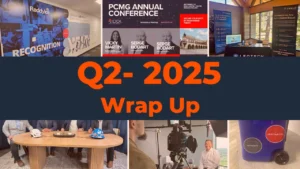7 Benefits of Automated Case Erectors
With few exceptions, startup companies and small CPG manufacturers start with at least some capital investment in equipment. However, full automation of their end-of-line packaging tends to come later.
Although both manual and semi-automatic case erectors are fairly common for a growing company, there may be some costs when relying on these methods and some benefits to gain when switching to fully automated equipment.
What are manual & semi-automatic case erectors?
A manual case erector is a simple tool, a 90-degree wedge where the worker inserts the opened case blank to achieve perfectly squared corners while they secure the bottom flaps with tape or glue.
With a semi-automatic case erector, the worker opens the case blank by hand and inserts the case into the machine. The case erector then automatically folds and seals the bottom flaps in preparation for packing.
When is the right time to invest in an automated case erecter?
The decision to invest and build out a secondary packaging line isn’t an easy one. It takes planning and analysis to make sure this addition will bring meaningful improvements to your throughput and efficiencies.
These are common indicators that a manufacturing firm is ready for an automated case erector:
- Decreased ability to meet demand with the existing configuration
- End-of-line bottlenecks are slowing throughput
- Increased inventory damage as a result of poor product packaging
- Increased maintenance on existing equipment
When searching for a solution to these issues, read the 5-step guide to choosing a case erector
Why choose an automated case erector?
Here are seven ways an automated case erector can improve production.
1. Increase speed
Both semi-automated and manual case erector models rely on human hands to open and manipulate the case blanks, and this time-consuming operation is eliminated with an automated case erector. Even if you have an A-team on manual case forming, one worker can build 2-5 cases a minute. However, an automated case former can produce up to 30 per minute, improving throughput immediately.
2. Reduce backlog
Building cases by hand is time and labor intensive. Before packing, workers must first assemble a sufficient supply of built cases. This not only adds production time, but it also takes up valuable floor space. An automated case former can build cases on an as-needed basis, which frees up space on the floor for other purposes.
3. Ease of operation
Unlike a manual or semi-automatic method, there is little to no handling of the corrugated cardboard blanks during formation with an automated case erector. The machine opens, squares and seals the bottom of the case. All you need is an operator to load the blanks and enter dimensions, and the machine does the rest.
4. Faster changeovers
One hesitation to investing in new equipment is the need for skilled operators to complete a changeover. Today’s automated case erectors are designed to complete changeovers in minutes. When multiple different-sized cases are required for a given line, executing fast, easy changeovers will reduce downtime and give your operators time to focus on more productive tasks. Look for a machine that uses fewer parts and components. This reduces your downtime even further as fewer parts means less maintenance.
5. Smarter uses for labor resources
For much of the past decade (COVID-19 era excluded), a labor shortage and historically low unemployment have created challenges in the manufacturing space. A Deloitte study forecasts 2.4 million unfilled manufacturing jobs in the U.S. between 2018 and 2028. Forming boxes and cases for 8-hour shifts can be a difficult role to fill and maintain for any length of time. Automation of case forming frees up time that would otherwise be spent on recruiting and screening for a high-turnover role. It also enables more strategic use of personnel resources.
6. Reduce injury and repetitive strain
When workers form and seal cases for 8-hour shifts, the repetition can create strain injuries in tendons of the arms, wrists, shoulders and hands. In the long run, repetitive strain injuries can reduce productivity, increase time off for treatment and recovery, and decrease satisfaction at work. In the manufacturing space, any opportunity to reduce the risk of repetitive strain injury benefits worker health and productivity. Automation of case formation reduces exposure to employees as well as the company.
7. Reduce damage to inventory
Automated erectors can form cases and seal the bottom flaps with high precision. This accuracy reduces the risk of skewed case corners and missed applications of adhesion. Machine-built boxes mean straighter stacks and less opportunity for damage during shipment.
For more helpful information, check out this article: Looking to automate? Top features that contribute to OEE]
Case Erectors
If you’re looking for a fully automated case erector that provides effortless set-ups, quick and trouble-free changeovers, consistently square cases, fewer wear parts and less maintenance, consider INSITE. Our equipment design includes innovative use of robotics, active case squaring and elementary operator controls to simplify your case-forming application.
Ready to get started? Contact INSITE Packaging today and talk to one of our experts.
Follow us on social media for the latest updates in B2B!
Twitter – @MarketScale
Facebook – facebook.com/marketscale
LinkedIn – linkedin.com/company/marketscale









